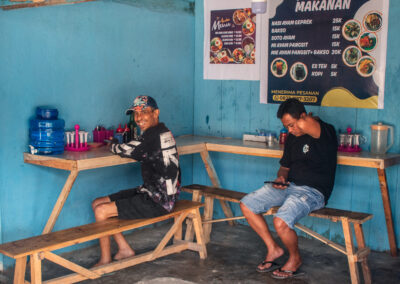I spent five days in August 2025 traveling through Tana Toraja in the highlands of South Sulawesi, Indonesia—a region where life and death are interwoven in profoundly unique ways. One night was in a remote village, sleeping on thin blankets inside a traditional tongkonan house with no modern amenities—just cold water, roaming animals, wood smoke, and the rhythms of daily life. The next day I trekked for hours through quiet villages and rice paddies, feeling both far from and deeply connected to humanity. My camera sought to capture Toraja’s sacred relationship with death: ancient stone graves guarded by tau tau effigies, hanging coffins, moss-covered caves, and even a tree where infants are gently laid to rest. Here, the dead often remain at home for months or years as “to makula”—sick or asleep—until elaborate funerals can be held, their bodies carefully preserved and still treated as part of the household. I was especially moved by Marta, who passed away at 103 and is still lovingly cared for by her daughter, who laughed at my confusion when she asked if the soap I brought was for her or for Marta—a moment that revealed our different perspectives on death. I also witnessed a Rambu Solo’ funeral, where buffalo and pigs are sacrificed to help a soul journey to Puya, the land of the dead, and a Ma’nene ritual in Baruppu, where families exhume, clean, and rewrap ancestors in acts of devotion and kinship. To be welcomed into these intimate spaces and rituals was a rare privilege, and I am deeply grateful to the families for their generosity, to my guide Erwin for arranging these encounters, and especially to my friend Dr. Paul Koudounaris, whose research first introduced me to Tana Toraja and opened the doors that made this journey possible.
























































































